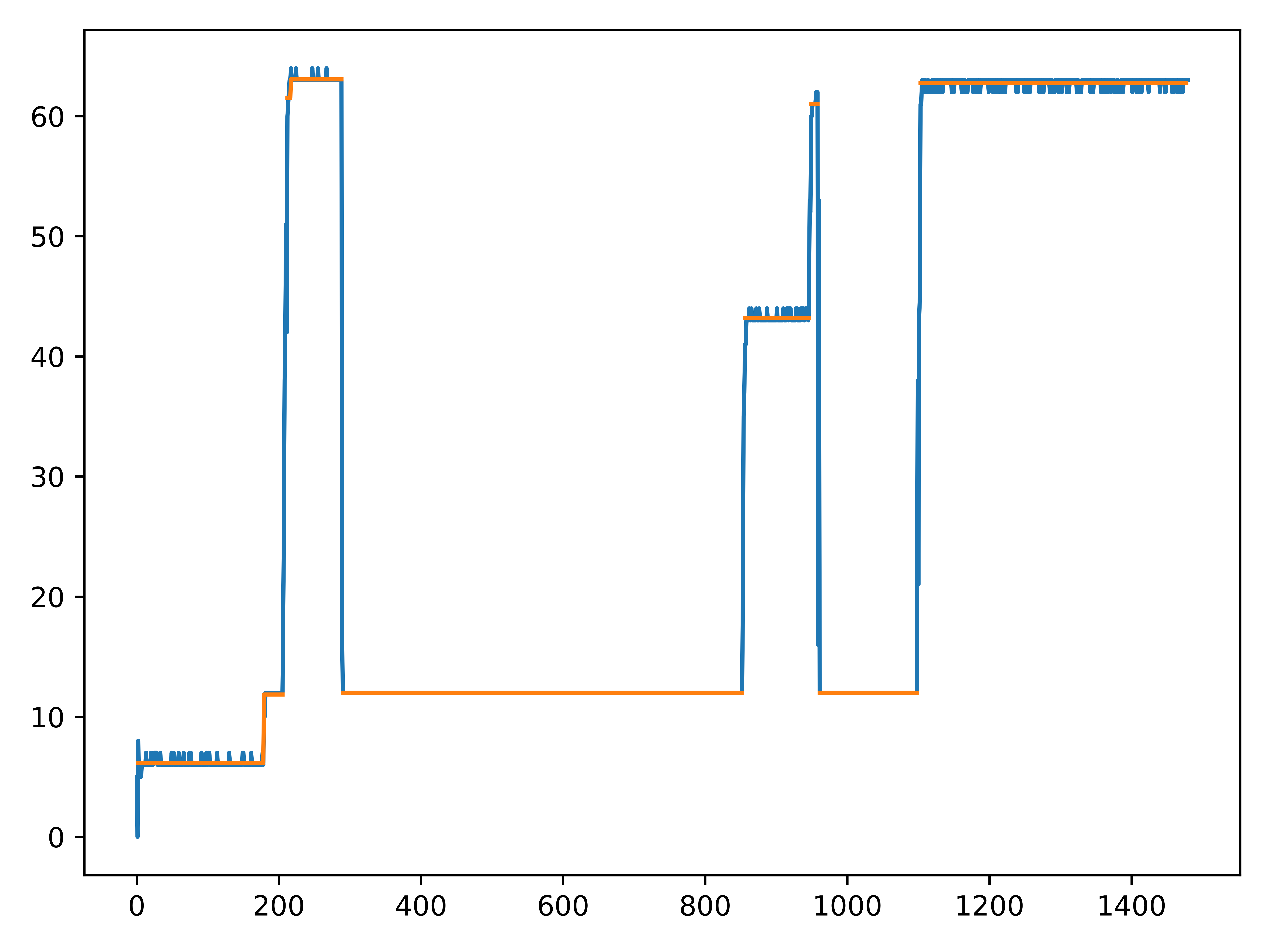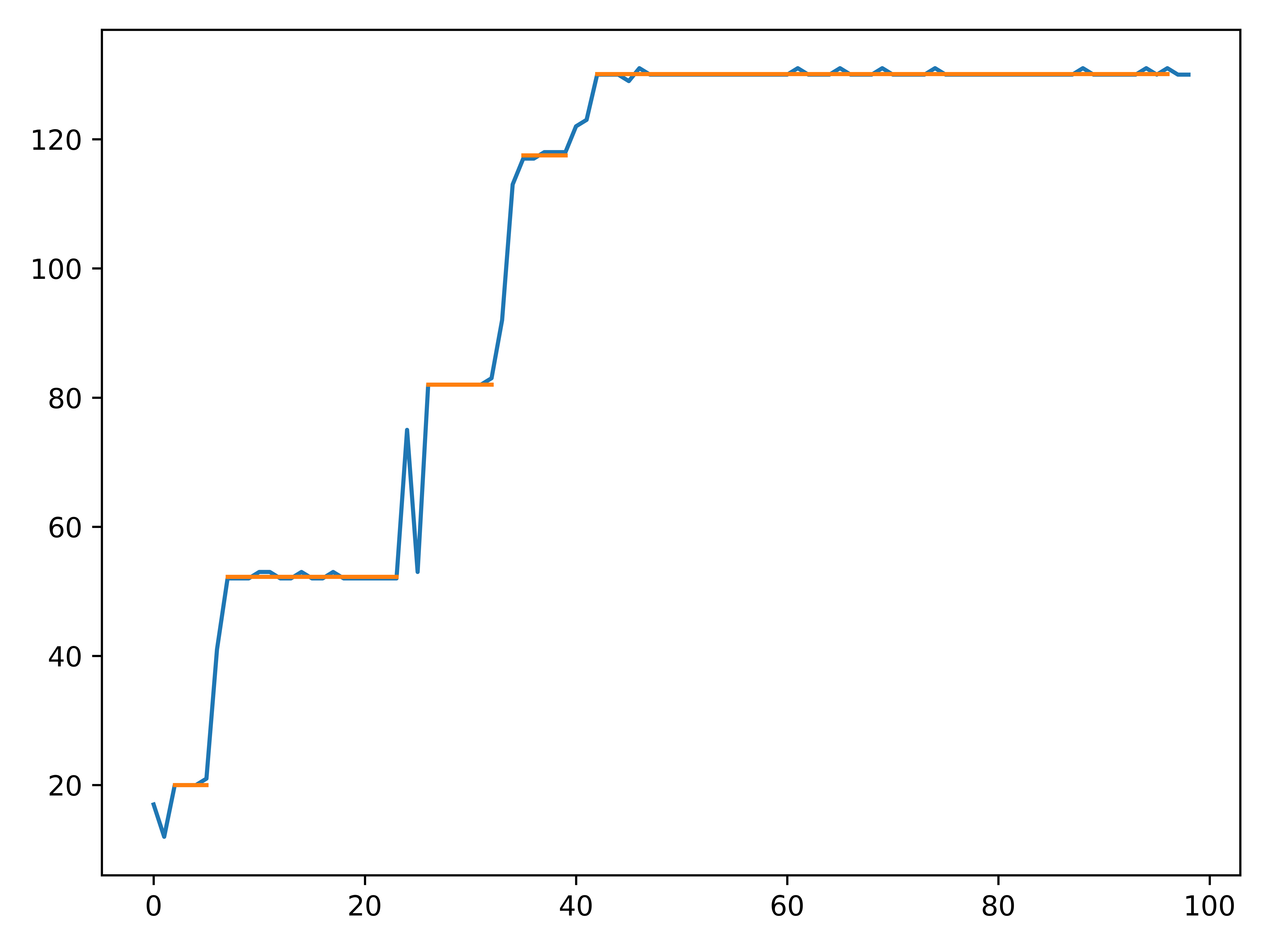Escalator
escalator is a small "change point detection" Python library allowing to detect stagnation in the values of a signal, a sort of horizontal steps detector.
Unlike all the change point algorithms I found, this one doesn't try to to find the moment where the change happens, but search for when the stagnation periods start and end.
If you use the jump and cache features, you can run it on big datasets in seconds (good results for a 700k elements dataset in 2s).
Coupled with noise reduction and parameterization adapted to the data domain, I think that this algorithm can be very useful.
I was inspired by the ruptures library, check it out, it provides a lot of interesting change point algorithms.
Dependencies & Installation
escalator is supposed to work under Python >= 3.6.
It is written in pure Python and depends on numpy.
- You can install it with pip:
pip install escalator-nyandams
Example
EscalatorRush parameters:
- cost: the cost function
- min_step_size: the minimal size of a step
- max_dist: distance at which we consider a point isn't in the current step
- jump: ignore some indexes during the fitting of the data, the highest, the more indexes you'll jump over. Improve execution time but reduce the accuracy of the results.
- cache_size: number of elements in the step at which moment we decide to use a cached value of the mean of the step instead of the cost function. Improve a lot the performances for big datasets. On the worst case, without using the jump feature, for a 50000 elements time series it could take 129s without cache, and only 0.8s with a simple cache of 100 elements.
import step_detection as esc
signal: list = [0, 0, 0, 0, 0, 0, 0, 0, 0, 0, 15, 30, 31, 29, 30, 30, 29, 32, 45, 70, 70, 71, 69, 72, 70, 70, 70, 75, 78, 85, 85, 90, 95, 100, 100, 100, 101, 100, 101, 100, 100, 100, 99, 100, 100] cost = esc.DistanceMedianCost() algo = esc.EscalatorRush(cost=cost, min_step_size=3, max_dist=2, jump=1, cache_size=100).fit(signal) stair_steps = algo.predict()
[(0, 10, 0.0), (11, 18, 29.833333333333332), (19, 27, 70.28571428571429), (33, 45, 100.0909090909091)]
If steps are really close to each others, you can regroup them to have better results (I recommend doing it, it takes no time):
```python
import step_detection as esc
...
stair_steps = esc.group_steps(steps=stair_steps, signal=signal, gap=2 , dist=1)You can then plot easily the result with your favorite package.

